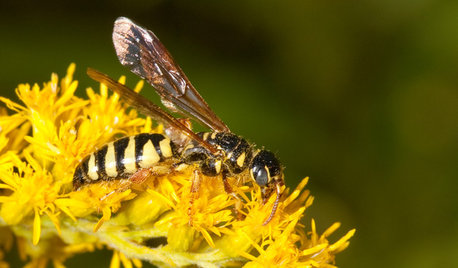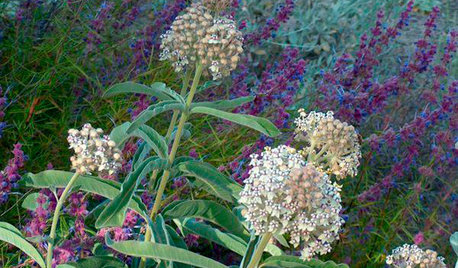Have you been hunting for natives?
plantsonthepoint
15 years ago
Related Stories

GARDENING GUIDESAttract Thynnid Wasps With Summer-Flowering Native Plants
These beneficial insects will hunt damaging beetle grubs in your lawn
Full Story
GARDENING GUIDESWe Bust 4 More Native Plant Myths
Have you been taken in by these fallacies about gardening with native plants?
Full Story
GARDENING GUIDESHow to Find the Right Native Plants for Your Yard
Find plant maps, sale sites and guides that make going native in the garden easier than ever
Full Story
HOUZZ TOURSMy Houzz: Art Dealer's Modern-Native Mix in Canada
Traditional Northwest style meets a modern aesthetic in this comfortable, gallery-like home in downtown Vancouver
Full Story
GARDENING GUIDESGarden-Friendly Native Alternatives to Overplanted Exotics
There are lots of gorgeous, wildlife-friendly native plants ready to make an appearance in your garden
Full Story
GARDENING GUIDES10 Deer-Resistant Native Flowers to Plant This Fall
Learn about natives that embrace some kinds of wildlife but resist grazing deer
Full Story
GARDENING GUIDESOh, Deer! 10 Native Flowers That Stand Up to the Herds
Keeping a garden amid hungry deer can be hard, but these plants should fare well
Full Story
GARDENING GUIDES15 Native Flowers That Feed Native Bees
These perennials offer superfood to hundreds of bees and are gorgeous in their own right
Full Story
NATIVE PLANTSPlant These Fall-Flowering Natives in Early Summer for Pollinator Love
These 3 groups of plants will support masses of beneficial insects come autumn
Full Story
GARDENING GUIDES10 Top Native Plants for Southern California Gardens
Enjoy a fuss-free, water-wise garden by growing plants naturally in tune with the climate and wildlife of Southern California
Full StoryMore Discussions






trianglejohn
nckvilledudes
Related Professionals
Derry Landscape Architects & Landscape Designers · Holly Springs Landscape Architects & Landscape Designers · Arnold Landscape Architects & Landscape Designers · Biloxi Landscape Contractors · Eagle Landscape Contractors · Emmaus Landscape Contractors · Framingham Landscape Contractors · Mendota Heights Landscape Contractors · Overland Park Landscape Contractors · Pueblo West Landscape Contractors · Seminole Landscape Contractors · Tehachapi Landscape Contractors · Tustin Landscape Contractors · Washington Landscape Contractors · Maple Heights Landscape Contractorsjeffahayes
Lynda Waldrep
nckvilledudes
Dibbit
tamelask
jeffahayes
trianglejohn
razorback33
Iris GW
tamelask
razorback33
plantsonthepointOriginal Author
brenda_near_eno